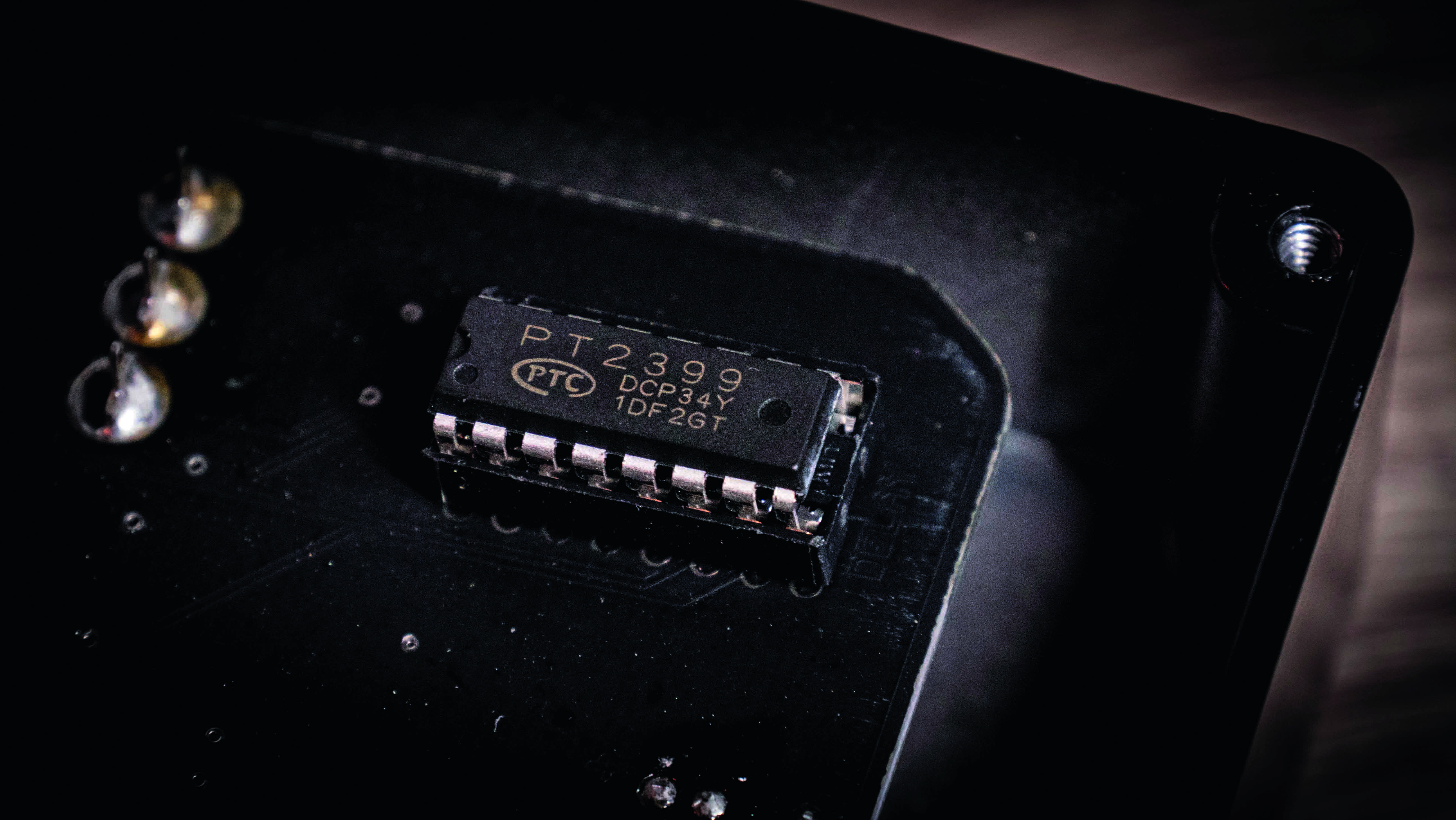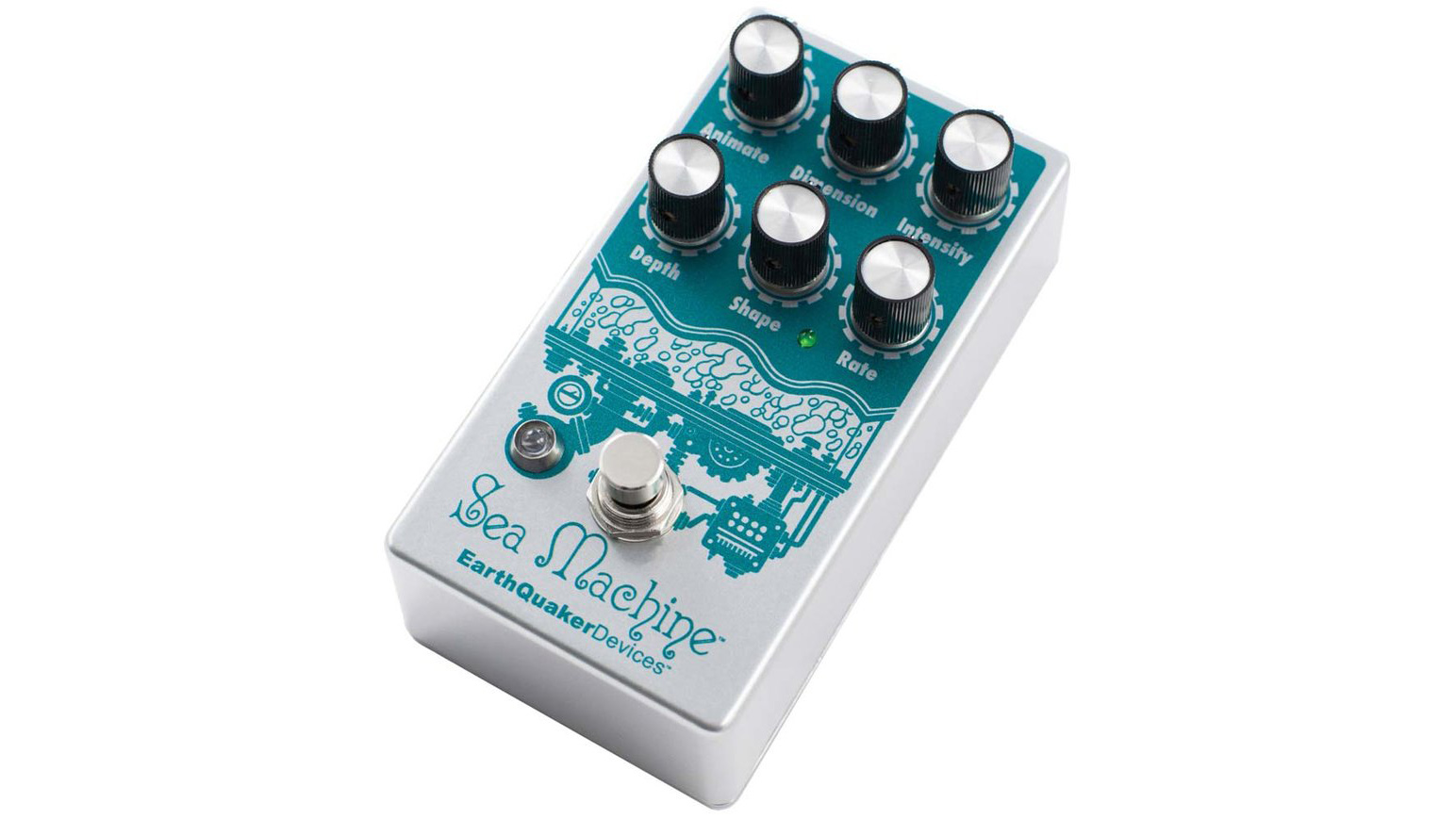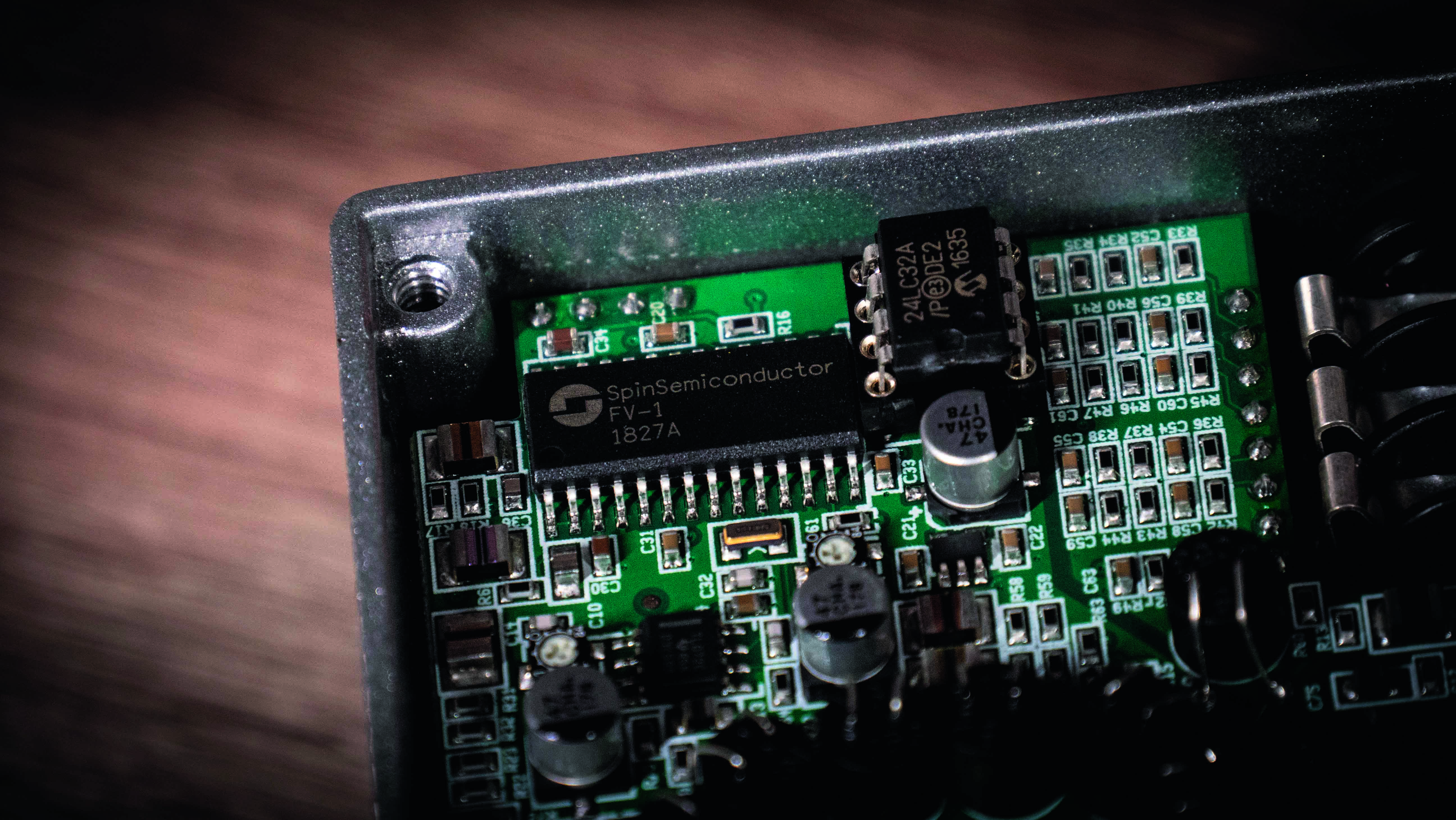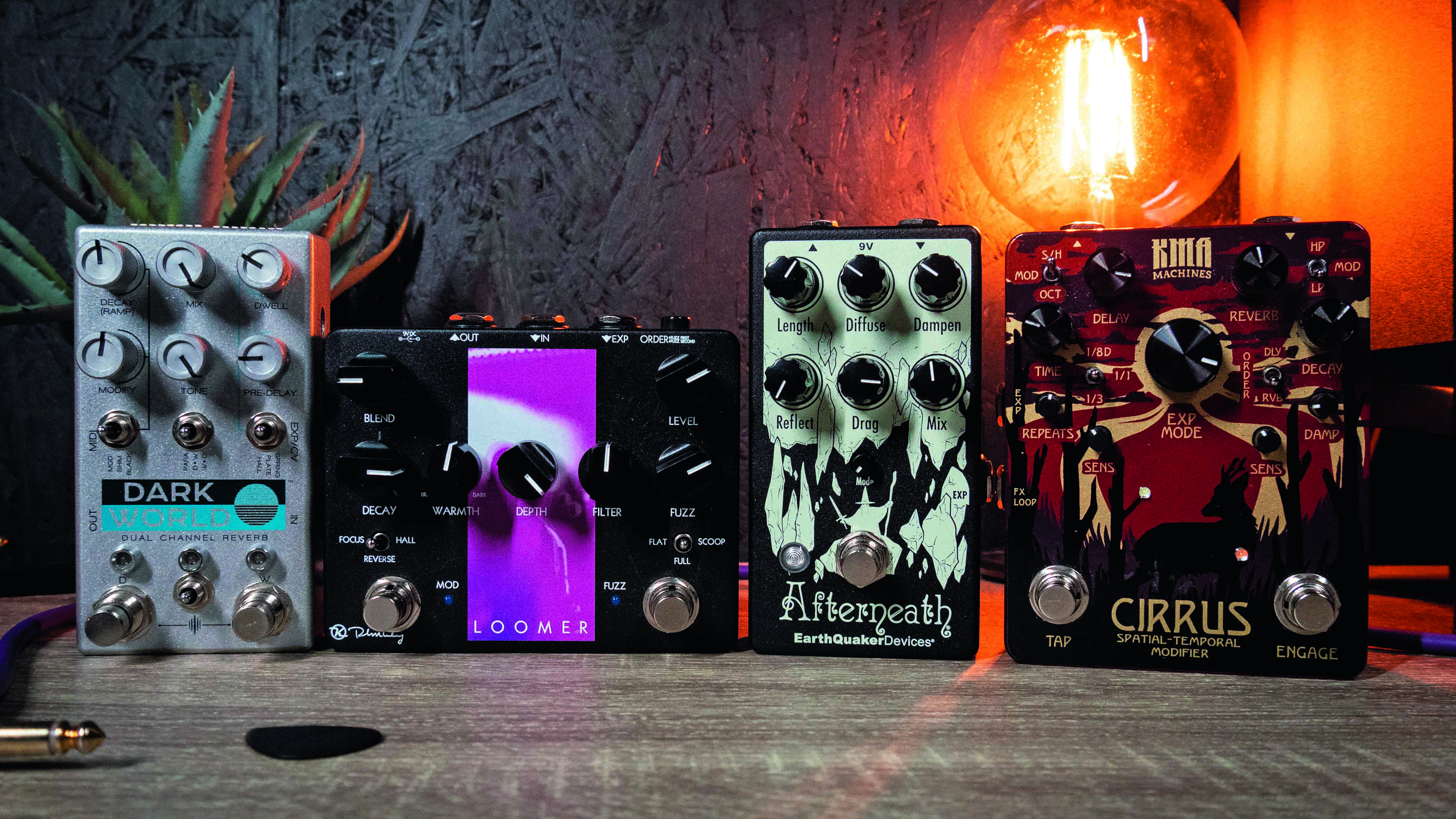What differences do the chips used in reverb and delay pedals make?
Stefan Fast of YouTube channel ThePedalZone cracks open his pedal collection to discuss
The majority of us probably rarely think about what’s inside our guitar pedals. We like the thought of them being mystic devices created by sonic magicians, with access to unobtanium unicorn dust. However, I honestly think that the narrative becomes even more magical when you understand the story behind some of the crucial components in there.
So let’s take a quick look at the PT2399 and FV-1 chips and how they helped shape the pedal scene as we know it today.
PT2399 CMOS echo / delay chip

This pivotal integrated delay circuit was developed in the late '90s by Princeton Technology. With a delay time ranging from 30ms to 340ms, it was originally designed for adding slapback delays and reverberating sounds to karaoke machines and entertainment systems. But it quickly became an integral part of the burgeoning pedal scene and for four good reasons:
1. It simply sounded great. Even though it’s digital, it really nails those iconic analogue and tape-style echoes of the past. Hence, you’ll often see PT2399 delays marketed as analogue-voiced or vintage-inspired digital delay pedals.
2. Where other delay chips and bucket-brigade devices would need an external clock, filtering or memory in order to create an effect, everything necessary to create a delayed sound was contained within the PT2399 itself making it super easy to use.
3. It was also affordable and readily available, which made it viable for small pedal brands to invest in this technology.
4. Compared with other delay chips, it was super compact, which made it easier to make unique analogue frameworks around it. You’ll often see PT2399 designs outfitted with wild modulation circuits, dirty preamps or chaotic oscillation features, making for much more creative and unique takes on delay effects.
Get the MusicRadar Newsletter
Want all the hottest music and gear news, reviews, deals, features and more, direct to your inbox? Sign up here.
PT2399 pedals

Death By Audio’s Echo Dream 2 is the perfect showcase of how far you can push a PT2399. The chip has been massively overclocked, giving you up to one second of lo-fi delay time. The pedal was then outfitted with a multi-LFO modulation section and a crushing fuzz circuit, all allowing for walls of obliterating ambience.
Showing how great the PT2399 can be elsewhere, the Keeley Mag Echo recreates classic modulated analogue/tape-style delays. It has up to 600ms of delay time with close to no noise artifacts, which shows that some clever filtering can push this chip far beyond its normal 340ms limit, still providing stellar results.
Then we have EarthQuaker Devices’ Sea Machine. This pedal really highlights how great the PT2399 is for making chorus pedals, too, due to the chip’s ability to do delays as short as 30ms. It also features a multi-mode LFO and the ability to adjust the pre-delay and feedback of the delay line, opening up for slapback echoes and cascading reverbs, pushing this pedal far beyond conventional chorus.
Spin Semiconductor FV-1

The FV-1 was developed in 2006 by none other than MXR co-founder and Alesis founder, Keith Barr, and Frank Thomson of Alesis. By walking the halls of NAMM year after year, they discovered that there was a need for an affordable and intuitive DSP (Digital Signal Processor) solution aimed at delay and reverb pedals, so they decided to deliver the sonic goods.
Much like the PT2399, the key reasons for the FV-1’s massive success were its affordability, simplicity and abundance of great sounds. Other DSP chips existed, but they were expensive, complex to program and complex to integrate. The FV-1 had stereo converters, RAM and eight sample effects stored in it, making it ready to go instantly. Also, by allowing the use of open-source third-party drag-and-drop programming software, it enabled people without any formal coding skills to make their very own effects from scratch.
The chip also allowed creators to store up to eight custom effects via an external EEPROM chip. This is why you often see FV-1-based pedals offering several variations of an effect. The importance of this chip can’t be stressed enough because it has allowed small companies to create hi-fi digital reverb, pitch-shifting, delay and modulation effects all on their own. Sounds and technology that used to be solely reserved for the big players in the industry.
FV-1 pedals

EarthQuaker Devices’ Afterneath simply came about from Jamie Stillman messing around with how many short delays he could stack in the FV-1 software, resulting in this now iconic ambient reverb pedal. It’s a great example of how this DSP accommodates creative experimentation and exploration from anyone, not just trained DSP engineers.

As so many companies use the FV-1, it’s a perfect platform for collaboration. You can technically take the EEPROM from any FV-1 device and install it in your own to start using those sounds. Chase Bliss Audio has gone all in with its Dark World Reverb; it uses two FV-1s where one side is developed by Keeley and the other is made by Cooper FX, letting you mix and match standard and experimental reverbs.
Elsewhere, Keeley’s Loomer is a reverb and fuzz in one. The FV-1 handles the three reverb modes, while the fuzz is an all-analogue circuitry of its own. A great showcase of how the FV-1 can easily be integrated with other effects due to its compact size.
Finally, KMA Machines’ Cirrus is a unique reverb/delay pedal using two FV-1 chips in order to give you both a multi-mode delay and multi-mode reverb, which can be stacked any way you want and dynamically modulated through your playing.
“A fully playable electro-mechanical synth voice that tracks the pitch of your playing in real time”: Gamechanger Audio unveils the Motor Pedal – a real synth pedal with a “multi-modal gas pedal”
“Instead of labouring over a perfect recreation, we decided to make an expanded counterpart”: Chase Bliss teams up with Mike Piera for Analog Man collab based on the legendary King Of Tone









